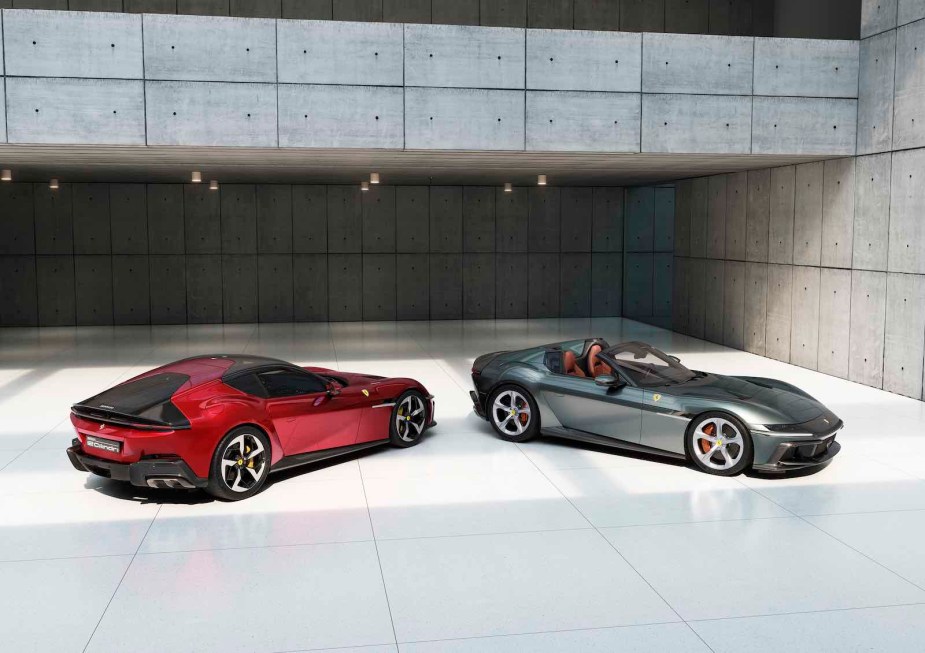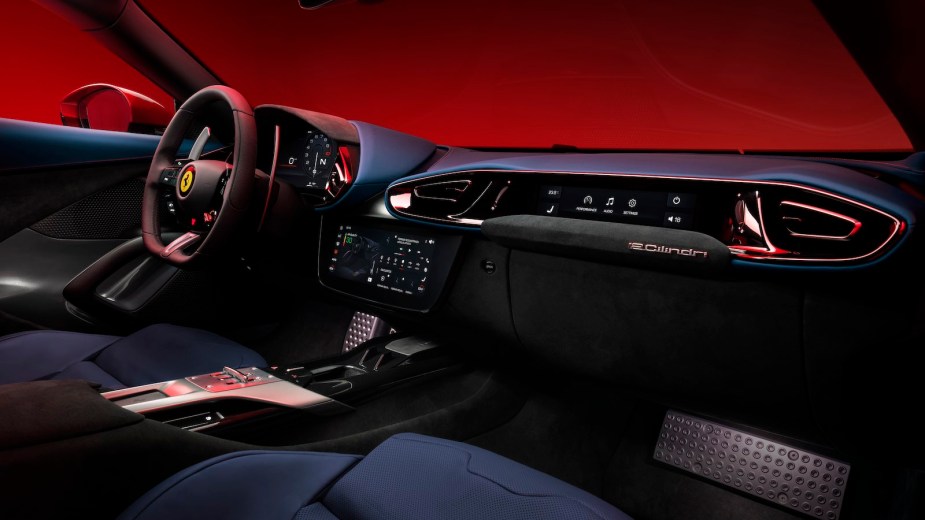
Ferrari Toots Its Own Horn With the 12Cilindri–Likely for the Final Time
Ferrari has a formula that’s worked for 70 years: Front engine, RWD, naturally-aspirated V12 supercars. This was the configuration of the first Ferrari ever: the 1947 Ferrari125 S. And while the automaker has experimented with mid-engine cars, convertibles, and even SUVs, it has always offered a front engine, RWD, naturally-aspirated V12 coupe. All that will almost certainly change soon. But for now, the 12Cilindri is the most “Ferrari” car yet, and a celebration of the formula that defines this company.
When Lamborghini released the Miura, it demonstrated that an Italian supercar with the engine in the middle could sell. But Enzo Ferrari famously insisted, “The horses pull the cart, not push it.” And before you write him off as an old man yelling for those new mid-engine supercar kids to get off his lawn, I’d argue that he knew what his buyers actually wanted better than anyone.
While future generations in charge of Ferrari have built widely-lauded mid-engine cars, the marque has always insisted on a front-engine, RWD coupe in its lineup. Why? The traditional weight distribution may not be as fast around a track, but is perfect for face-peeling launches and getting a little sideways in the twisties. These cars are just plain fun.

The very existence of front-engine, RWD, naturally-aspirated V12 Ferraris harken back to the Grand Tourers of yesteryear. It is, by definition, a retro configuration. But the latest generation, the 12Cilindri, goes one step further in celebrating Ferrari’s history. And I suspect that’s because it’ll be the last one of its kind.
The 12Cilindri features a naturally-aspirated 6.5-liter V12. It makes 820 horsepower at 9,500 RPM. It also has an eight-speed Magna PT dual-clutch automatic transmission. This generation of Ferrari’s “Berlinetta” (Italian for coupe) can shift 30% faster than the outgoing car. That’s it’s biggest mechanical innovation. Otherwise, the car is pure old school Italian muscle. It’s even a bit heavier than the outgoing car. It’s no faster to 60 or in the 1/4 mile. But if you want to lay down record-breaking track times, buy a McLaren.
Ferrari did throw a couple new gadgets at the 12Cilindri. It has active aerodynamics, panels at the rear corners that pop up when you’re braking at Daytona Superspeedway speeds. It also deleted all physical HVAC controls and buried them in the touchscreen menu for a “cleaner” look. I doubt this choice will age very well: even budget automakers are bringing physical controls back. Other supercar brands, such as Bugatti, never deleted them in the first place.
Another controversial choice is the front end. The expanse of black material at the font of the car, flush with its small headlights, is reminiscent of the Ferrari 365 gtb4 Daytona. Ferrari introduced that coupe in the late 1960s, and collectors have mixed feelings about its flip-up headlights. But with RADwood-era stuff in fashion right now, I’d say it’s a smart move on Ferrari’s part.

This nostalgia-infused Berlinetta is the last car of its kind. Most supercar companies have gone to mid-engine cars. While Aston Martin is still making a front-engine, RWD coupe, it’s gone to smaller, turbocharged engines. The 12Cilindri is straight out of another time. And it may not be long for this world. While Ferrari is quick to say the retro car is just celebrating the company’s 70 years of sales in the U.S., its SF90 PHEV’s rocketing sales are a sure sign of the changing times.
Ferrari hasn’t officially said this is its final front-engine, RWD, naturally-aspirated V12. But the automaker has tipped its hand in two ways. First of all, it always introduces a Berlinetta, then waits a few years to release a folding-hardtop convertible version. This keeps the model fresh as long as possible. But this time around, it is rolling out the hardtop and convertible configurations of the 12Cilindri on the same day.
Secondly, the 12Cilindri is named after its engine. Ferrari almost never does this. The last time was the F8 Tributo (2019-2023), the final Ferrari V8.
Next, find out why “Dominatrix”-like customer service has kept Jay Leno from buying a Ferrari, or experience the joy of driving a front-engine V12 Ferrari Berlinetta in the video below:



